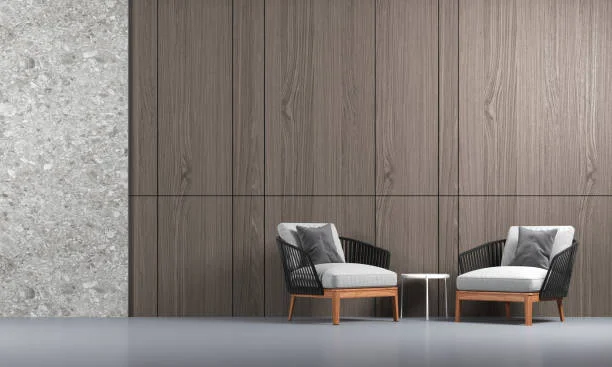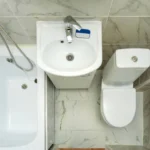I’ll admit it – I used to be one of those people who thought wood paneling belonged in 1970s basement rec rooms and nowhere else. Then I walked into a friend’s newly renovated living room that featured timber style wall cladding, and everything clicked. This wasn’t your dad’s wood paneling. We’re talking about sophisticated, precisely manufactured materials that bring all the warmth and natural beauty of wood into modern spaces without the installation headaches or maintenance drama. After spending months researching interior applications and visiting showrooms, I’ve become convinced that timber style cladding is having a legitimate design moment, and for good reasons that go way beyond just following trends.
Interior Performance Characteristics
Indoor environments present totally different challenges compared to exterior applications, and timber style cladding materials are engineered specifically for these conditions. Humidity control is probably the biggest factor – real wood interior paneling can show seasonal movement of 3-6mm across a standard room width just from normal humidity changes.
Modern timber style products typically exhibit dimensional changes under 0.5mm across similar spans. This stability comes from engineered core materials like MDF with moisture-resistant additives or high-density fiberboard that’s been through controlled pressing cycles to remove internal stresses.
The surface treatments deserve attention too. Interior timber style cladding often uses urethane or acrylic topcoats that provide scratch resistance and cleanability while maintaining the tactile feel of natural wood grain. Some products incorporate antimicrobial additives that help maintain indoor air quality – something you’d never get with traditional wood finishes.
Acoustic Performance Benefits
Here’s something most people don’t consider – timber style cladding can significantly impact room acoustics in ways that drywall or painted surfaces never could. The textured surfaces and varying densities of engineered wood products help scatter sound waves and reduce harsh reflections.
Perforated timber style panels are becoming popular in home theater and music room applications. These panels incorporate thousands of tiny holes that allow sound absorption materials behind the panels to work effectively while maintaining the wood aesthetic. Sound absorption coefficients of 0.6-0.8 are achievable with properly designed systems.
Some manufacturers offer panels with integrated acoustic cores – basically sandwich constructions where the visible wood-look surface conceals sound-absorbing materials. This approach gives you acoustic control without the industrial look of traditional acoustic treatments.
Installation Simplicity for Interior Applications
Indoor installation eliminates most of the weather and structural concerns that complicate exterior cladding work. Most timber style interior systems use either adhesive mounting or simple mechanical fasteners that don’t require specialized tools.
The dimensional stability means you can install large uninterrupted runs without worrying about expansion joints. I watched an installer cover a 16-foot accent wall with just three panels and some trimwork – try doing that with real wood planking.
Many systems use tongue-and-groove or ship-lap profiles that hide fasteners completely. The precision manufacturing means joints fit together with that satisfying click that tells you everything’s aligned properly. No fussing with shimming or scribing like you’d have with real wood.
Design Integration Strategies
Contemporary interior design is all about mixing textures and materials, and timber style cladding plays really well with other finishes. The consistent color and grain patterns make it easy to coordinate with flooring, cabinetry, and furniture without the unpredictable variation you get with natural wood.
Accent wall applications are probably the most popular interior use. A single timber style wall can anchor an entire room design while adding warmth to otherwise cool color palettes. The key is treating it as a backdrop rather than trying to make it the star of the show.
Partial wall treatments work really well too – wainscoting applications, headboard walls, or commercial reception desk faces. The material consistency means you get clean lines and professional-looking transitions to other wall surfaces.
Color and Texture Coordination
The manufacturing process allows for color control that’s impossible with natural wood. If you need to match existing woodwork or coordinate with specific design elements, custom color matching services can hit precise targets while maintaining wood-like grain patterns.
Some really interesting effects come from mixing different timber styles within the same space. Light oak tones paired with darker walnut colors create visual interest without the chaos you might get from actual mixed wood species. The consistent surface qualities mean different colors still read as part of the same material family.
Maintenance and Longevity Considerations
Interior timber style cladding basically eliminates the maintenance cycle that comes with real wood paneling. No seasonal oiling, no worry about scratches showing raw wood, no concerns about moisture damage from occasional spills or high humidity periods.
Most products just need occasional dusting or light cleaning with standard household cleaners. The factory finishes are typically more durable than anything you could apply to raw wood in the field. UV stability isn’t usually a concern indoors, but quality products still include UV inhibitors to prevent color shift near windows or skylights.
The dimensional stability also means fewer problems with trim and transition pieces working loose over time. Real wood paneling often develops gaps or raised edges as the material moves seasonally – engineered alternatives stay put once they’re installed.
Lighting Integration Opportunities
The consistent surface qualities of manufactured timber style panels make them ideal for integrated lighting applications. LED strip channels can be routed into panels during manufacturing, creating clean linear lighting effects that would be expensive and time-consuming with real wood.
Backlighting applications work particularly well where you want to emphasize the wood grain texture. Concealed LED strips behind translucent panels create warm, diffused lighting that enhances the natural wood appearance while providing functional illumination.
Discover ideas that inspire change and growth—explore more today on Management Works Media.






